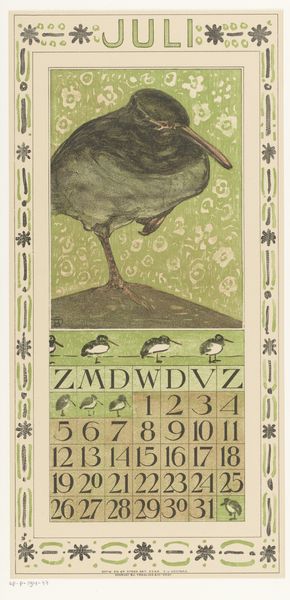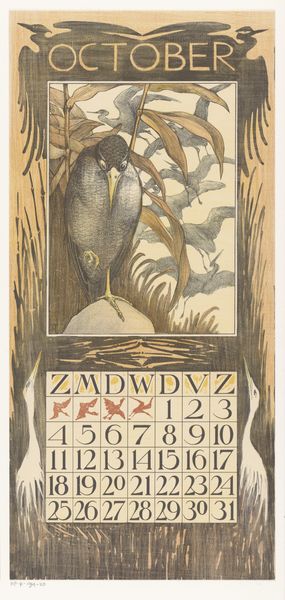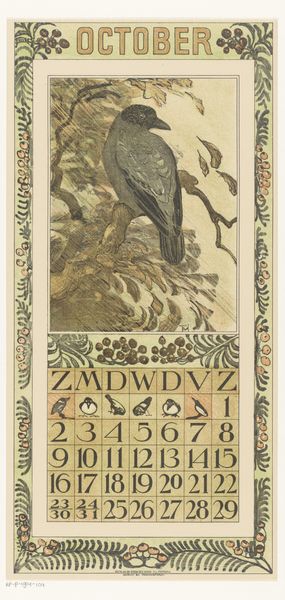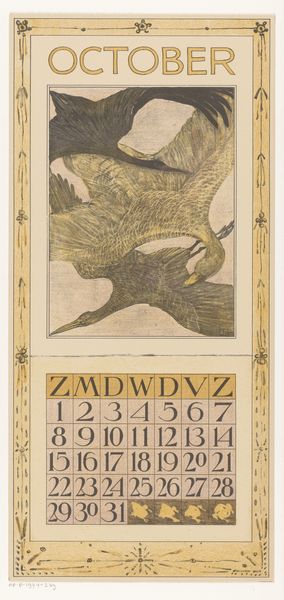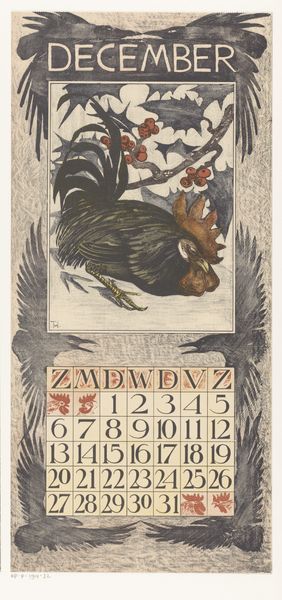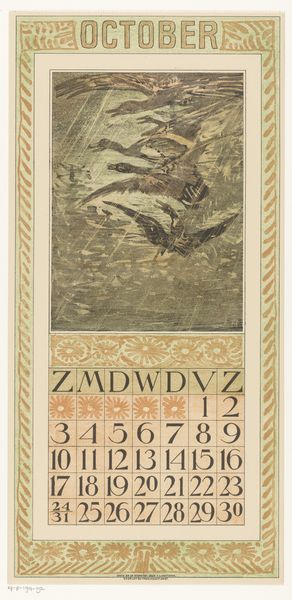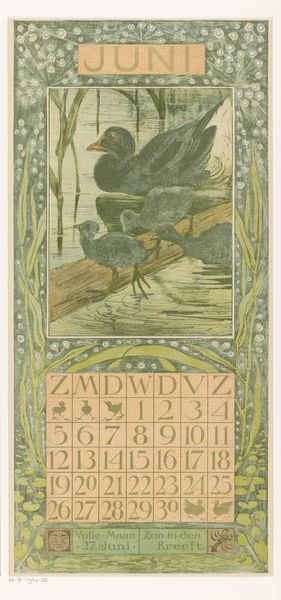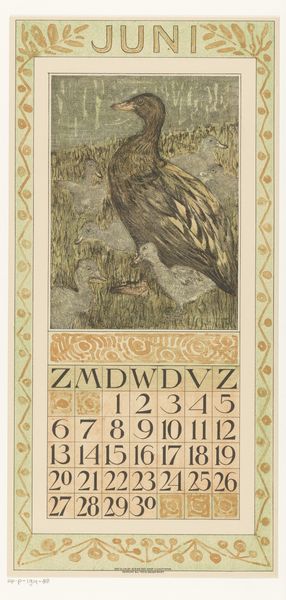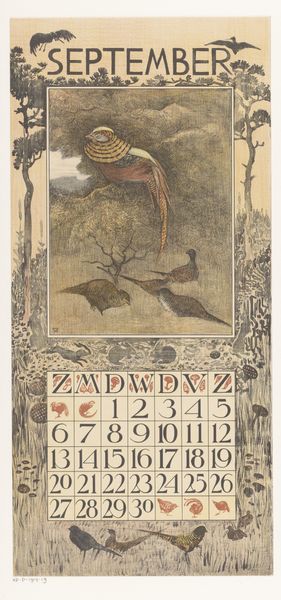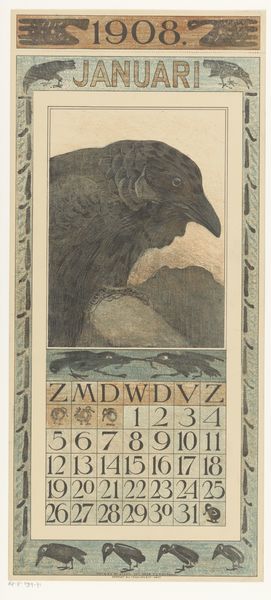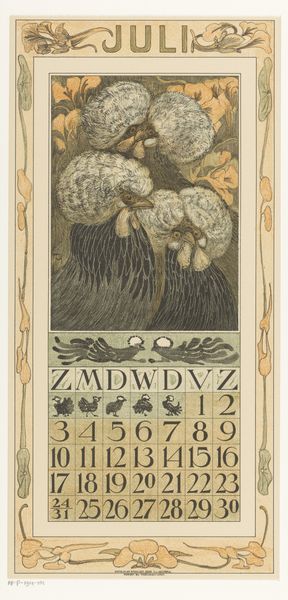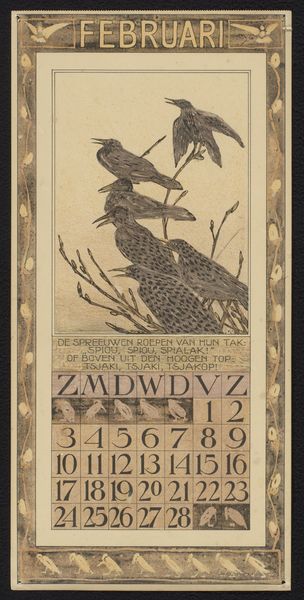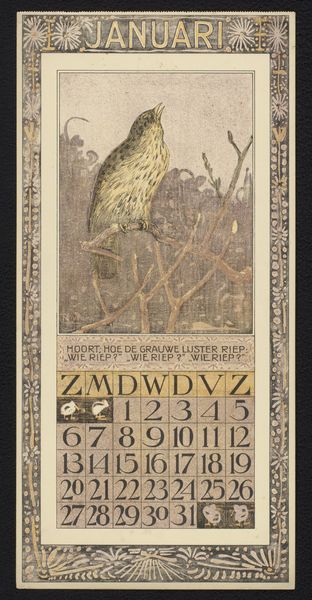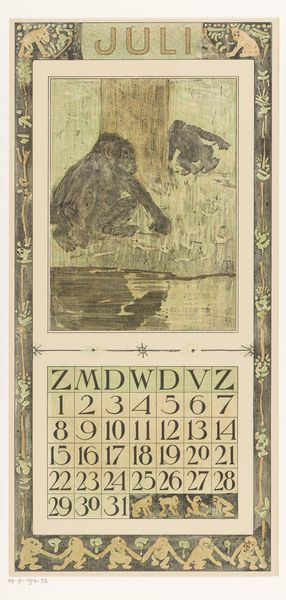
drawing, coloured-pencil, print, paper
#
drawing
#
art-nouveau
#
coloured-pencil
#
animal
# print
#
landscape
#
paper
#
coloured pencil
#
art nouveau
#
watercolour illustration
Dimensions: height 440 mm, width 210 mm
Copyright: Rijks Museum: Open Domain
Curator: Welcome. Here we see Theo van Hoytema's "Kalenderblad november met vogel in de regen," a calendar print for November of 1907, currently held in the Rijksmuseum's collection. It employs coloured pencil and a striking Art Nouveau aesthetic. Editor: It looks a bit gloomy, doesn’t it? The colours are muted, and that bird is positively dejected. It's got that perfect "end of autumn" melancholic vibe, like a little feathered Eeyore resigned to its damp fate. Curator: Indeed. Van Hoytema uses the pictorial field quite effectively here. The weight of the bird’s form in the upper register visually suppresses the numerical grid below, creating a sense of seasonal heaviness. Notice also how the vertical strokes mimic the feeling of a light but persistent rain. Editor: Oh, I see what you mean, with the diagonal lines suggesting the rain! It’s subtle, almost like a secret weather report woven into the art. And that little frieze of birds at the top and bottom of the calendar...are they marching to their doom or just searching for crumbs? Curator: Functionally, the repeated bird motif certainly serves to frame and therefore unify the composition. More figuratively, birds were a common emblem within Art Nouveau. Consider their symbolic connection to freedom and natural cycles. Hoytema repeats the image of the smaller birds on the top and bottom and also highlights how each bird, even the larger main subject, blends a degree of geometric abstraction with naturalism. Editor: True, it's that stylized realism typical of the movement. So the whole thing, with its earthy palette and repetitive patterns, creates a complete ecosystem, a little weather diorama where time and nature perform their perennial dance. I get the sense that time feels sluggish to the depicted bird. Curator: Your assessment brings into relief an important conceptual relationship. This calendar offers us a system, a grid that gives order to the passage of time. Against that structure we observe a single animal’s humble encounter with the elements. Therein lies a delicate tension. Editor: It’s thought-provoking, seeing how a mundane thing like a calendar can become a vessel for capturing fleeting moods and evoking existential considerations. Thank you. Curator: My pleasure. Reflecting on Van Hoytema's interplay between systematized time and natural forms, it allows us to contemplate the human-nature binary more broadly.
Comments
No comments
Be the first to comment and join the conversation on the ultimate creative platform.
